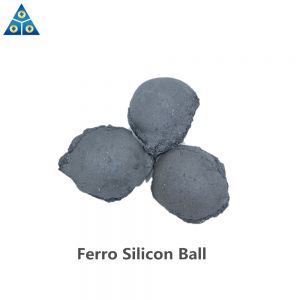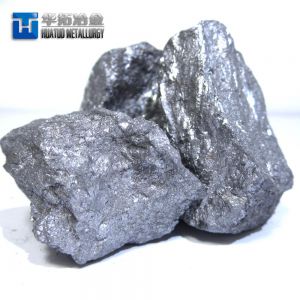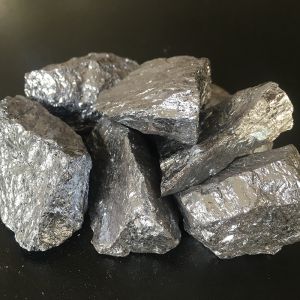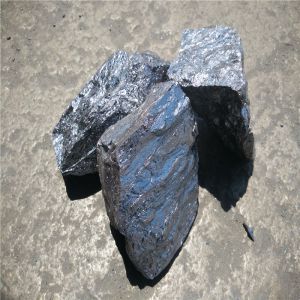Characteristics and uses of 90% black silicon carbide
Silicon carbide powder is a kind of micron-sized silicon carbide powder. It is mainly used in the abrasive industry. Its grade classification is very strict and no large particles are allowed. Silicon carbide powder has the characteristics of good wear resistance and high strength.
90% black silicon carbide belongs to the second-level black silicon carbide. The content of silicon carbide is not less than 90%, between 90-92%. 90% black silicon carbide is rarely used in sandblasting and abrasives, and is mostly used in the field of refractory materials.
As a refractory material, it has the following characteristics:
1. High temperature resistance. Silicon carbide has a high melting point, a high refractory temperature, and its high-temperature chemical stability and strength are higher than those of corundum refractory materials.
2. Good resistance to high temperature corrosion and high temperature impact.
3. High mechanical strength, wear-resistant, and durable after being made into refractory bricks or products.
4. The cost is lower than the first-grade black silicon carbide, which has a cost advantage.

The main uses of 90% black silicon carbide are:
1. Steel manufacturing industry. Key parts such as the waistline and nozzle of the steelmaking furnace are made of silicon carbide bricks or composite silicon carbide bricks made of other materials. For example, silicon nitride-silicon carbide refractory bricks are used at the nozzle of steelmaking blast furnaces. Corundum-silicon carbide-graphite composite refractory bricks are used for mixing furnaces, torpedo tubes, and iron trenches. Silicon carbide-corundum composite refractory materials are used as continuous casting shrouds, integral plug rods and ladle linings.
2. A good deoxidizer in the smelting of cast steel and ball-milled cast iron. As a deoxidizer, silicon carbide can increase the carbon equivalent and replace ferrosilicon.
3. Non-ferrous metal metallurgical industry. For example, in the smelting of aluminum, copper, magnesium, and zinc, silicon carbide refractory bricks and refractory products are also widely used. For example, silicon carbide composite refractory bricks are used in cast aluminum electrolytic cells and cast aluminum ladle nozzles. Refractory lining for non-ferrous metal smelting shaft furnaces, distillation furnaces, burners and other equipment. Silicon carbide products for thermal equipment such as crucibles and trays used for smelting non-ferrous metals.
4. Glass, cement, ceramics and other industries. In industrial kilns such as rotary kilns, annealing furnaces, tunnel kilns, down-flame kilns, muffle furnaces, garbage combustion furnaces and other equipment, black silicon carbide refractory bricks and lining plates are used as furnace linings and thermal equipment.
What are the uses of silicon carbide in the steelmaking industry?
Silicon carbide can be used as a new type of composite deoxidizer in the steelmaking process. Compared with traditional silicon powder and carbon powder for deoxidation, silicon carbide has more stable physical and chemical properties, faster deoxidation speed, and shorter deoxidation time. It can save energy, improve steelmaking efficiency, improve steel quality, and reduce raw and auxiliary materials. consumption, reduce environmental pollution, and improve the comprehensive economic benefits of electric furnaces.
In addition, silicon carbide can also improve the stability of raw materials, reduce the thickness and ball volume in the mill, and increase the mill volume by 15%-30%. In the foundry and steelmaking industries, silicon carbide can increase the temperature in the furnace, extend the melting time, increase steel production, and play the roles of carburizing, deoxidizing, siliconizing, and heating. At the same time, silicon carbide can also be used as a substitute for ferrosilicon to reduce dust pollution and reduce costs. It is a new way of steelmaking.

What are the advantages of silicon carbide compared to traditional deoxidizers?
1. Good stability: Compared with traditional silicon powder and carbon powder, silicon carbide deoxidizer has more stable physical and chemical properties.
2. Good deoxidation effect: Silicon carbide has fast deoxidation speed, early slag formation, thick reducing atmosphere, and very rich foam, which can effectively reduce the oxygen content in steel and achieve the purpose of deoxidizing molten steel.
3. Improve the absorption rate of elements: Silicon carbide can also effectively increase the absorption rate of elements.
4. Reduce costs: Silicon carbide can replace the more expensive traditional deoxidizer ferrosilicon powder and alloy powder, reducing steelmaking costs.
5. Improve the quality of steel: Using silicon carbide deoxidizer can improve the quality of steel, stabilize the quality of molten steel, refine the grains, and remove harmful impurities from the molten steel.
6. Environmental protection: Using silicon carbide can reduce environmental pollution.
Silicon carbide deoxidizer has benefits in other uses in steelmaking
1. Composite silicon carbide deoxidizer can completely replace ferrosilicon, which can effectively reduce steelmaking costs by 6-10 yuan/ton of steel.
2. If used as a reducing agent for electric furnace steelmaking, the cost of steel per ton will be reduced by 5-13 yuan, and the power consumption will be reduced by 10-40 degrees.
3. The heat energy generated when the silicon carbide element is oxidized can increase the amount of electricity used and extend the operating time.
4. In the process of producing manganese steel and chromium steel, the loss of manganese and chromium can be reduced.
-

Raw Material Ferro Silicon Briquette From Hnnan
$400.00 - $700.00 / Metric Ton
-

Good Quality Ferro Calcium Silicon With Best Price
$1,345.00 - $1,350.00 / Ton
-

High Purity Metallurgical Grade Silicon Metal 411 Products
$1,460.00 - $1,860.00 / Metric Ton
-

Hot Sale Manufacturing Cheap Price Silicon Metal for Aluminium
$700.00 - $2,000.00 / Metric Ton
